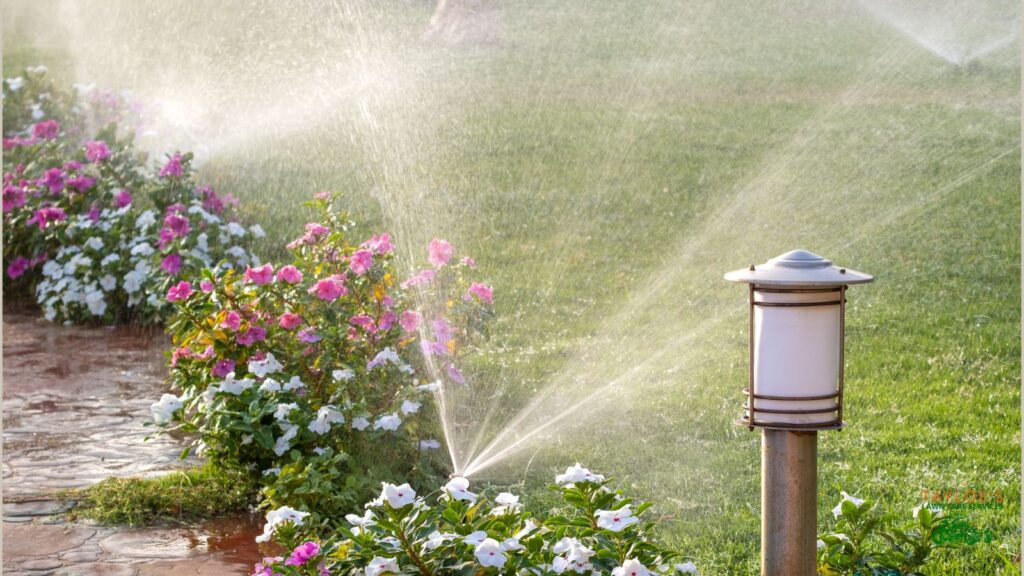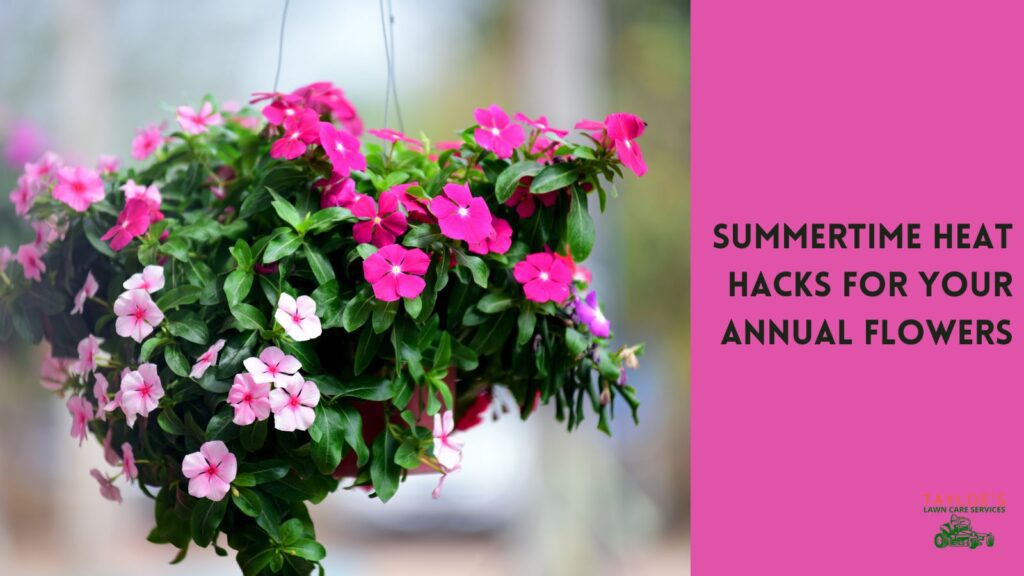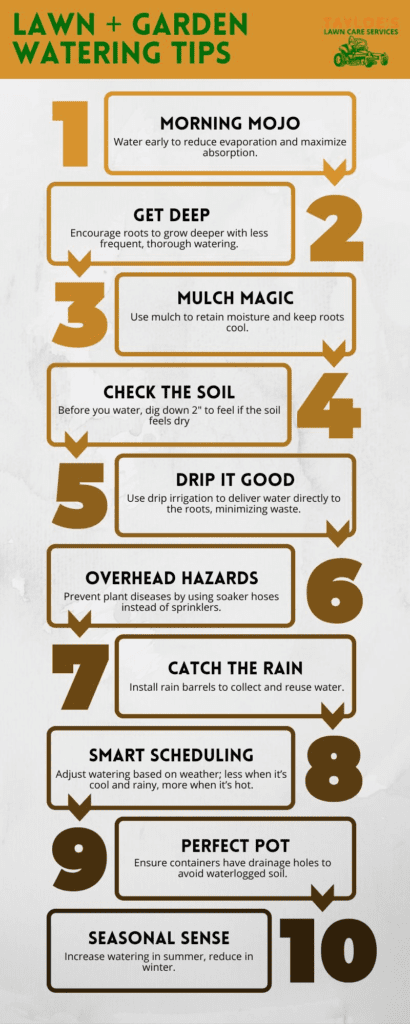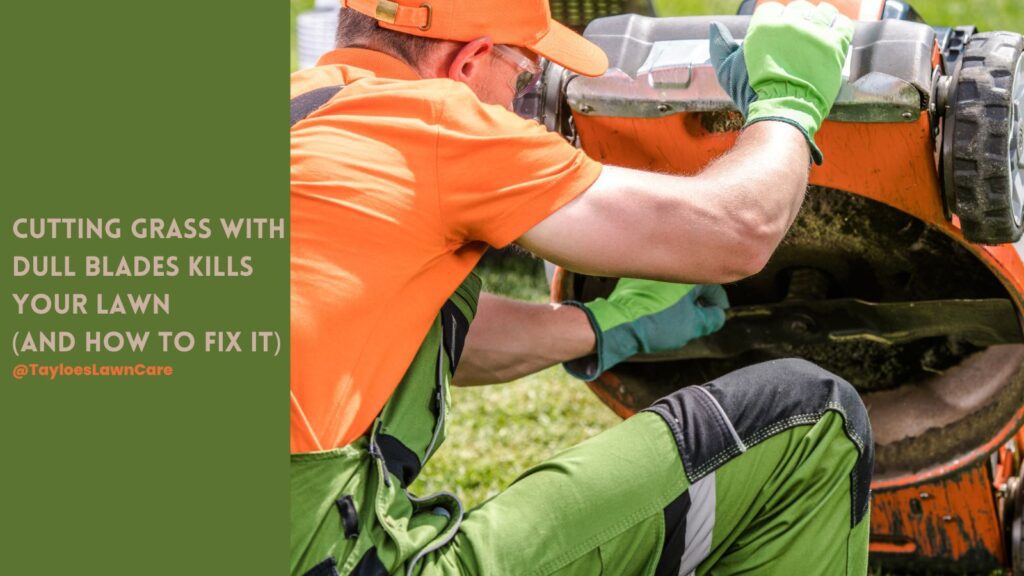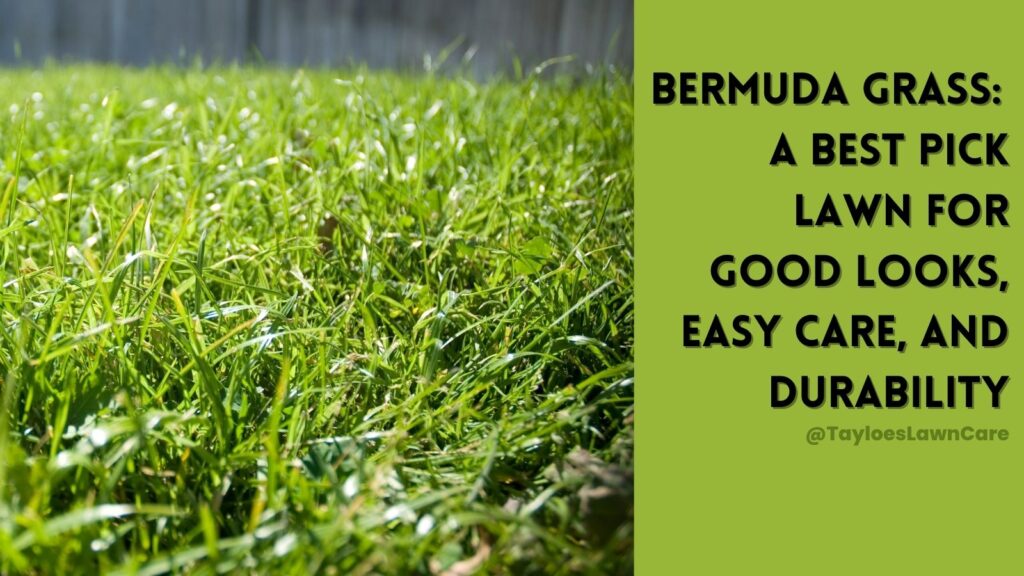Last Updated on: 20th November 2024, 07:30 am
Here’s how your grass can beat the heat.
Summer is here, and your lawn is bracing for a serious heatwave in North Carolina. You know the summer lawn care drill: you water, you mow, you sweat, and still, your lawn looks more like a hay field than a lush, green oasis.
Frustrating, right? You may wonder, “I’m following all the rules, so why isn’t my lawn living up to expectations?”
I hear you.
No matter how much care and effort you put in, keeping that lawn green during the intense summers feels like an uphill battle.
But what if I told you that the secret isn’t working harder but smarter?
That’s right. A few unconventional tricks could change the game for your lawn this summer.
So, let’s cut to the chase.
I’m here to share some not-so-obvious tips that will help you save water, improve your lawn’s health, and boost your curb appeal.
And the best part?
They’re all about collaborating with nature, not opposing it.
Ready to give your lawn a fighting chance this summer?
Let’s dive in.
Turning the Tide: Your Summer Lawn Care Game Plan for in NC
Here’s how to flip the script on your summer lawn care woes and turn that sun-scorched yard into a lush, green sanctuary.
1. Water Wisely: The “Less is More” Technique
Forget daily dribbles.
The trick here isn’t to water little and often but to go for deep, infrequent soaks.
Here’s the deal: when you give your lawn a long drink, the water penetrates deeper into the soil. This encourages the grassroots to stretch far and wide in search of moisture, making them stronger and more drought-resistant.
It’s like training your grass to toughen up, preparing it for the heat without a daily sip.
So, instead of a quick sprinkle every day, aim for a thorough soaking a couple of times a week.
Your lawn will thank you by growing deeper roots and standing up better to drought and heat.
2. Cycle Grass for Nutrient Recycling: The Free Fertilizer
It sounds fancy, but it’s just a cool way of saying, “Leave those clippings on the lawn after you mow.”
Why?
Because they’re like a free lunch for your lawn.
As the clippings decompose, they unleash nutrients back into the soil, acting as a natural fertilizer. This means you can cut down on synthetic fertilizer, which is good for your pocket and the planet, too.
Think of it as your lawn feeding itself, recycling nutrients, and staying lush and healthy. Plus, it saves you the hassle of bagging up those clippings. Win-win.
3. The Dawn Patrol: The Unlikely Best Time to Water
You might not be a morning person, but your lawn sure is.
Watering in the early AM—think dawn or just after—gives your lawn a head start against the heat.
It’s all about timing. Water too late, and much of it evaporates before it can do any good.
Water too early, and you risk fungal diseases (you don’t want that).
But hit that sweet spot at dawn, and you maximize water absorption, minimize waste, and give your lawn the hydration it craves to face the day.
It might mean setting that alarm earlier, but the results are well worth it.
4. The Ice Cube Hack: Targeted Thirst Quenching
Ever noticed those particularly stubborn dry spots on your lawn, even when the rest is doing okay?
Here’s a quirky but effective fix: ice cubes.
Yep, you read that right.
Placing a few ice cubes on these parched areas provides a slow-melting water source that deeply penetrates the soil, hydrating those needy spots without overwatering the rest of your lawn.
It’s a gentle, targeted way to deal with problem areas and as easy as raiding your freezer.
5. Sun-Powered Pest Control: Clear Plastic, Clear Results
Remember the words, “if you can’t beat them, join them”?
Well, we will use the summer heat to our advantage when it comes to weeds and soil pathogens.
Solarization is a simple yet brilliant tactic: cover parts of your lawn with clear plastic during the hottest weeks. The sun’s rays will bake the soil beneath, killing off weeds and pests, all without a drop of chemicals.
Think of it as cleaning your lawn and prepping it for healthy growth without unwanted guests.
It’s a bit of effort upfront for a season-long payoff.
6. The Secret Shade Strategy: Temporary Sun Shields
This might appear counterintuitive, but hear me out.
Sometimes, a little shade can go a long way, especially during those peak heat hours.
Using temporary shading solutions, like lightweight, portable canopies or strategically placed sun umbrellas, can protect your grass from the midday scorch.
It doesn’t have to be all day, just during those brutal hours, to give your lawn a breather. Plus, it creates a cozy, shaded spot for you to enjoy your garden, even in the heat of summer.
7. Nighttime Aeration: The Cool Down Benefit
Lastly, let’s talk about poking some holes in your lawn.
Aeration, the process of making small holes in your lawn, helps oxygen, water, and nutrients reach the roots where they’re needed most.
While aeration is nothing new, doing it at night can be a game changer. Evening aeration takes advantage of cooler temperatures, reducing stress on your grass and helping it absorb moisture and nutrients more effectively.
It’s like giving your lawn a nighttime spa treatment, helping it relax and rejuvenate for the next day.
And before you worry about becoming some nocturnal garden gnome, rest easy. This doesn’t make you a night owl, just a clever gardener playing the long game.
Unlocking the Secrets: Your Summer Lawn Care Questions Answered
Now, onto your burning queries:
How can I tell if my lawn is suffering from too much sun or not enough water?
Signs of dehydration include wilting, a bluish-gray color, or footprints that stay on the grass.
Yellowing or slow recovery from being stepped on may indicate excessive sun.
Deep, infrequent watering in the early morning encourages root growth and reduces stress.
What strategies can I use to keep my lawn green without a high water bill?
Focus on deep, infrequent watering to promote drought resistance, grass cycle for natural fertilization, and consider drought-resistant grass types.
These methods help conserve water and keep your lawn nourished.
Is there a wrong time to water my lawn during summer?
Watering in the midday leads to evaporation, and late evening can cause fungal diseases due to prolonged dampness.
Early morning watering is most effective for absorption and minimizing disease risk.
How can I spot early signs of pests or diseases on my lawn?
Regularly check for irregular patches that don’t improve with watering, unusual color changes, or thinning areas.
Early detection can be the key to preventing a small issue from becoming a widespread problem.
Can I maintain a green lawn without resorting to chemicals?
Absolutely. Embrace organic lawn care practices like composting, grasscycling, and organic fertilizers.
Also, consider beneficial insects for natural pest control.
What should I do about brown patches before they take over my lawn?
Identify the cause first – it could be drought stress, fungal diseases, or pests.
Adjust your watering routine, ensure proper drainage, and consider aerating compacted soil.
Organic fungicides can help with fungal issues. If pests are the culprit, natural pest control methods are effective.
Once my lawn turns brown, is it too late to save it?
Not necessarily. Brown grass can be dormant and might recover with proper care.
Resume a consistent, appropriate watering schedule, avoid walking on the grass to prevent further stress, and gradually reintroduce nutrients to encourage recovery.
How often should I mow my lawn in the summer, and at what height should I cut it?
Mowing frequency should be based on the grass growth rate, which can vary with water, heat, and fertilizer application.
A good rule of thumb is to never cut more than one-third of the grass blade’s height at once.
Keeping your lawn a bit taller in the summer can help protect the soil from sun exposure, retain moisture better, and develop deeper roots.
What is the best fertilizer for summer lawn care?
It is best to avoid fertilizing during the peak heat. But if you can’t wait, the best fertilizer choice is one that’s slow-release, preferably with a higher potassium percentage.
Slow-release nitrogen fertilizers ensure a steady supply of nutrients without overwhelming your grass, reducing the risk of burn in the heat.
Potassium strengthens the lawn against stress and helps it conserve water, which is crucial during hot, dry periods.
Opt for organic options where possible. They also improve soil health, enhancing water retention and root strength.
Always apply according to soil test recommendations to avoid over-fertilization.
Okay. Time to wrap it up!
Turning Up the Heat on Your Summer Lawn Care Game: A Victory Lap for Your Green Oasis
Look, we’ve all been there.
Staring out at a lawn that’s more straw than lush greenery, feeling like you’re in a one-sided relationship where you give and give, and all you get back is a sun-scorched yard.
It’s enough to make you want to throw in the towel, grab a desert plant catalog, and call it a day.
But deep down, you know that’s not what you signed up for when you envisioned your dream home with that perfect, green lawn.
I’m here to say, hang in there. You’re not just throwing water at a problem or fighting an unbeatable foe. You’re investing in your home and sanctuary.
With the unconventional wisdom we’ve shared, you’re armed to the teeth against the tyranny of the summer sun.
Imagine the satisfaction as you watch those deep watering sessions pay off, see the grass cycling, doing its thing, or notice the cool relief your dawn patrol efforts bring.
When you realize those ice cubes did the trick on that stubborn dry spot, or witness your lawn thriving under a carefully placed canopy and feel the triumph of a perfectly aerated night soil, soft underfoot and teeming with life.
This isn’t just about keeping up appearances; it’s about embracing the challenge, turning adversity into advantage, and proving to yourself that you can outsmart the summer heat.
It’s about the pride in knowing you’re conserving water, nurturing the ecosystem in your backyard, and creating a space where memories are made, all while doing right by the planet.
So, as the sun climbs higher and the days grow longer, remember. You’ve got this.
Armed with these tips, you’re not just surviving the summer; you’re setting the stage for your lawn to be the greenest on the block, a testament to your care, commitment, and a little bit of clever thinking.
Now, go out there and show the summer sun what you’re made of. Is the summer heat getting you down? Call Tayloe’s Lawn Care at 252.287.3376; we can help!
Author Profile

- Maureen Abuor
- Maureen Abuor is a professional content marketing strategist and SEO strategist, with particular knowlege of creating landscaping and gardening content that informs and delights her audience. When she's not working, she's a busy mother of three precious little ones and child of God.
Latest entries
 Lawn CareApril 29, 2025Best shady area grass seed for Eastern NC
Lawn CareApril 29, 2025Best shady area grass seed for Eastern NC GardeningApril 15, 2025How do I make organic soil for the garden?
GardeningApril 15, 2025How do I make organic soil for the garden? Flower GardenMarch 7, 2025What are wave petunias?
Flower GardenMarch 7, 2025What are wave petunias? Flower GardenMarch 3, 202520 Full-sun annuals for your spring and summer garden
Flower GardenMarch 3, 202520 Full-sun annuals for your spring and summer garden

